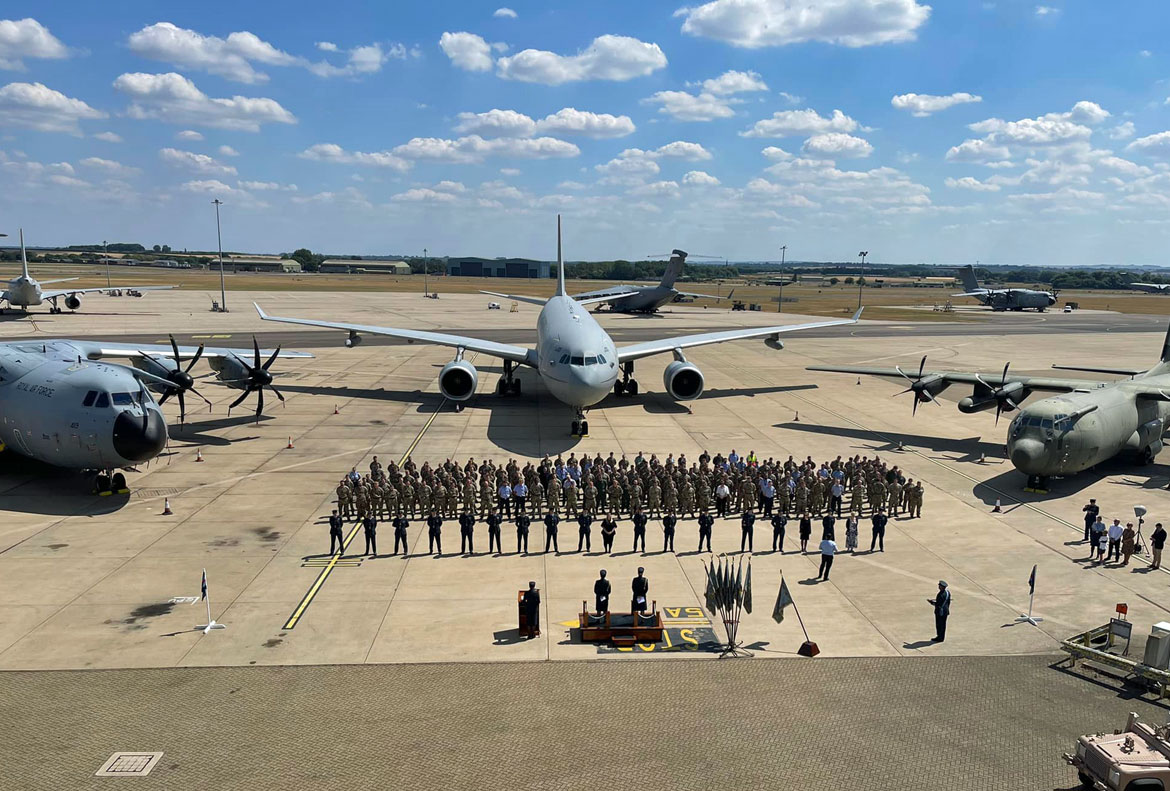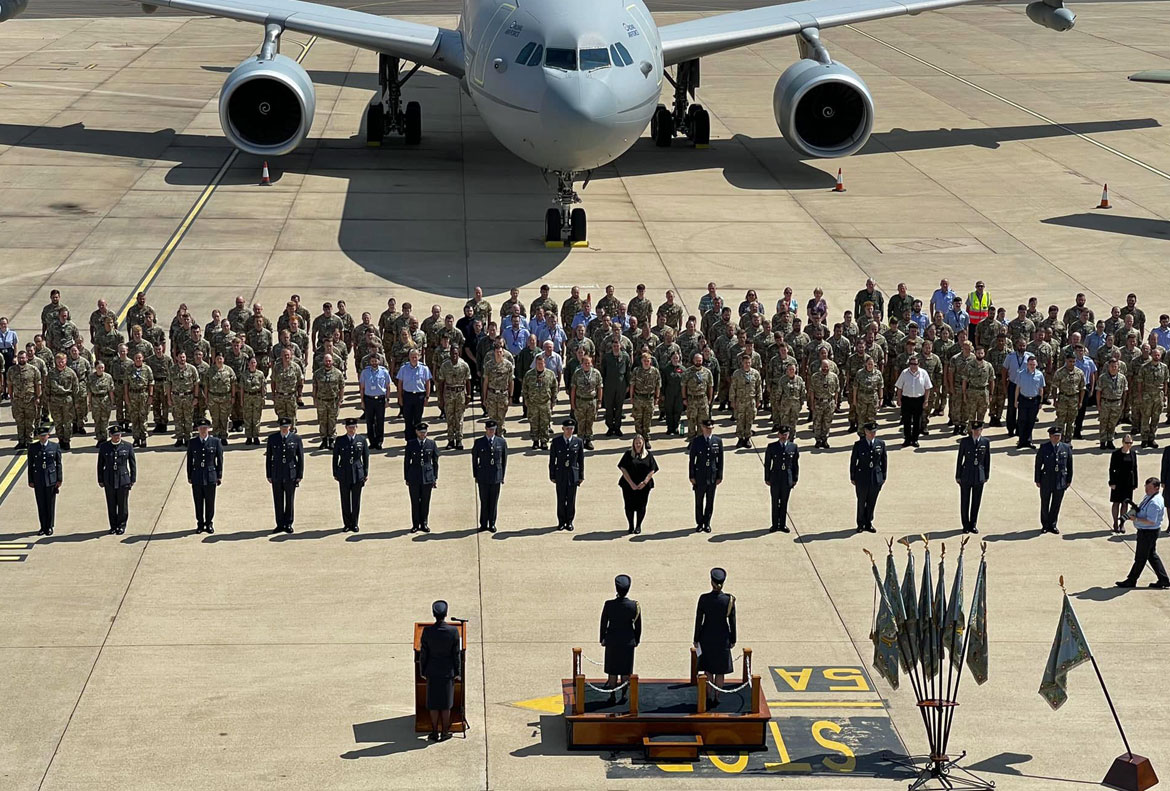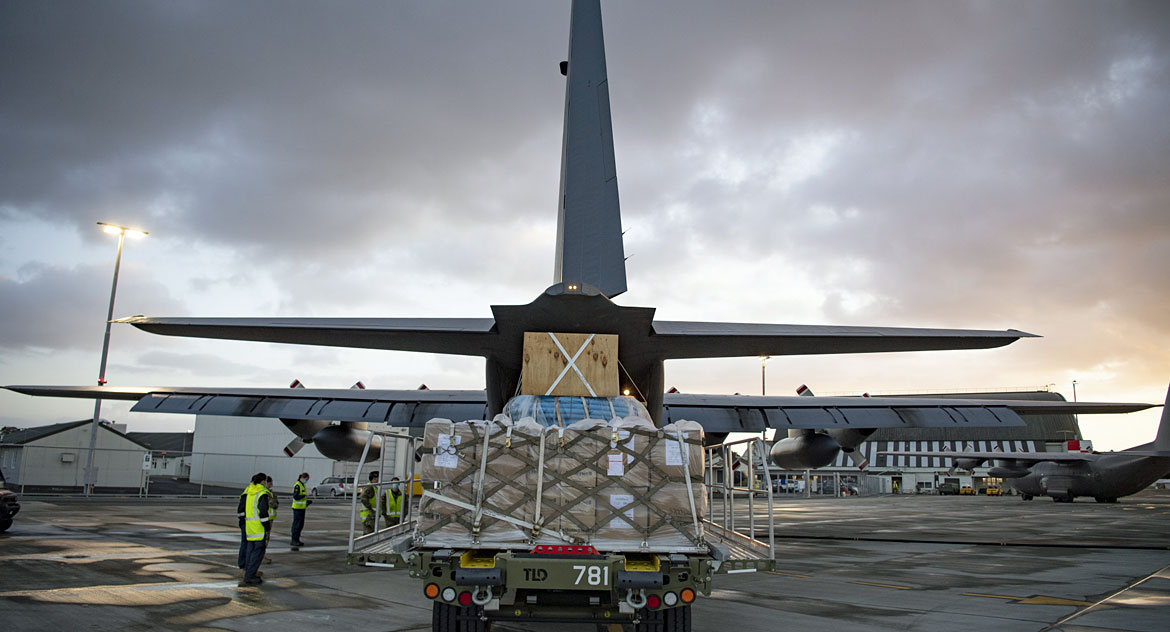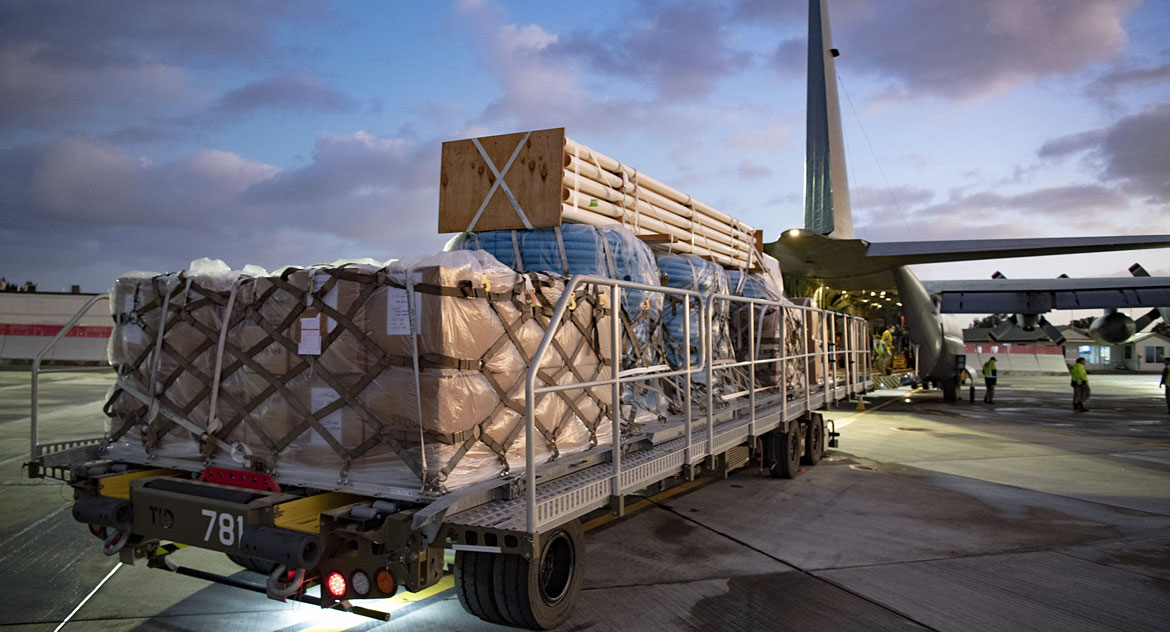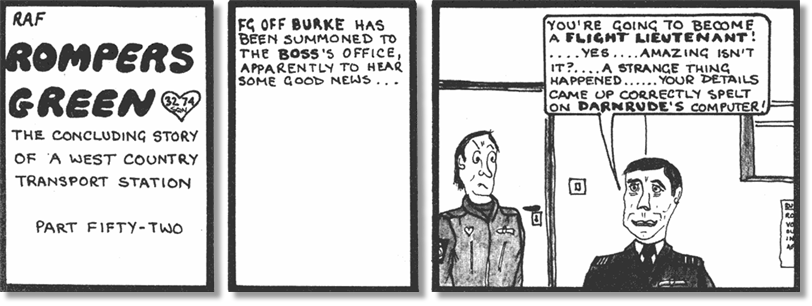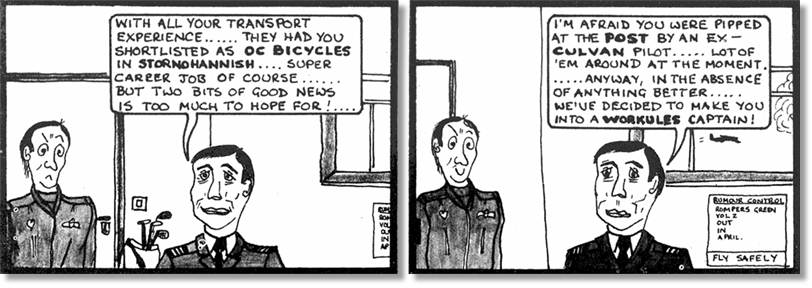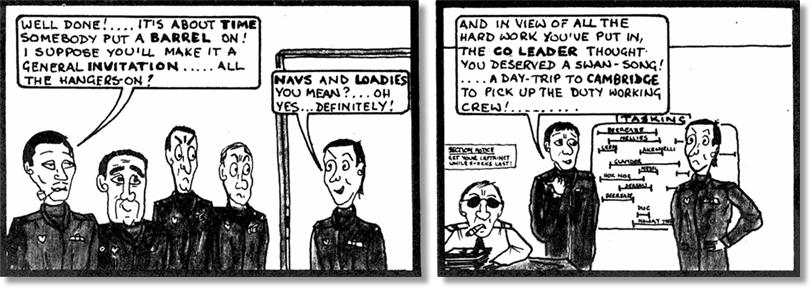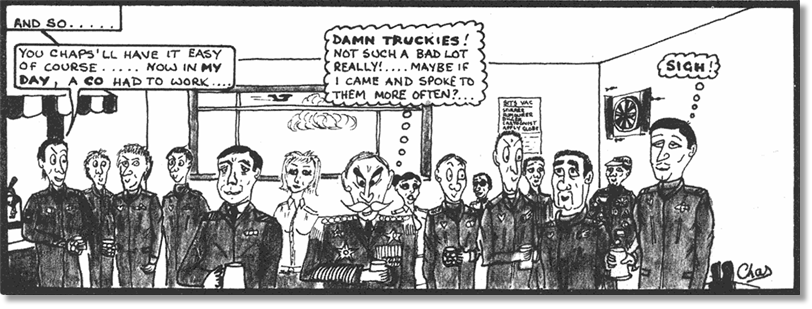
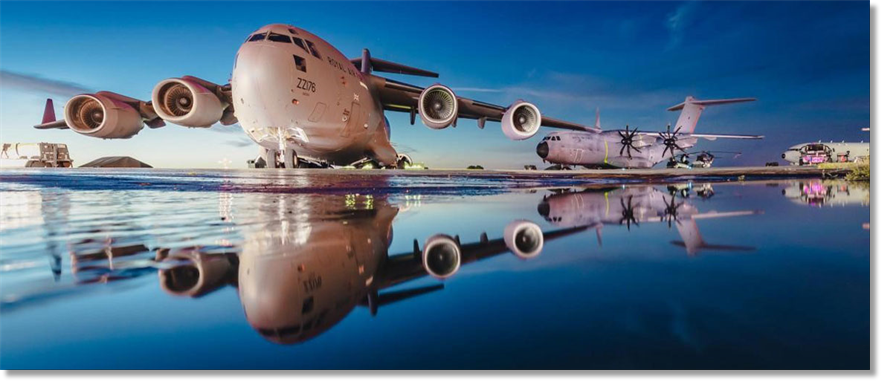
"During this period of extreme temperature, flight safety remains the RAF’s top priority, so aircraft are using alternative airfields in line with a long-established plan. This means there is no impact on RAF operations," the Royal Air Force said of flights at RAF Brize Norton, in a statement posted on Twitter by the Ministry of Defence.
Reuters


Subject: Re: UKMAMS OBA OBB #063022
Hi Tony
Thank you, as always, for another ‘good read’ this month. I was delighted to see the photo of the eight venerable, distinguished gentlemen having a refreshing lunch.
Being a couple of generations above me at UKMAMS, I have had the good fortune to meet all and work with some and have nothing but respect for all. I would, however, say on first glance I thought the panto season had come early this year. I’ll leave you to work out who is Snow White whilst I look ‘behind me’.
All the Best
Simon

Subject: Dogs in Vietnam
Tony,
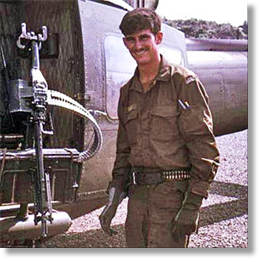

On a separate note, your latest newsletter included a story of the RAAF transporting Police Dogs in Papua New Guinea. We used to see a lot of our dogs being moved per C130. On one occasion, at Amberley, the cargo on an arriving C130 included two dogs in their transit boxes. These were fairly well secured per CGU 1/B straps. One of the dogs was extremely aggressive, the other reasonably quiet. While my team were preparing to unload the other cargo, I commenced unstrapping the dog's boxes. Unfortunately, one of the straps was actually keeping a dog box door secure. The next thing I know is that there is a ruddy great German Shepherd loose in the aircraft!
Luckily for me, it was not the aggressive one, but I did have a moment or two of anxiety shall we say. Later, I made a phone call to the Police Dog section with a suggestion that they get the ruddy box repaired!
Cheers, Vic

The decision was made after an Intelligence Corps soldier complained about the nickname Green Slime, in reference to the Corps’ beret colour. The soldier was reportedly left "humiliated" after he was asked if there was "anything from green slime?" at a briefing. An insider told the newspaper that use of the terms was "playful name-calling" as a way of dealing with the "nasty stuff" they come into contact with at work. The SAS member said troops had "more to worry about" than using nicknames.
Read more: The armed forces are undergoing changes with the army recently being asked to stop calling soldiers in the Queen's bodyguard "Guardsman" after female soldiers complained about being referred to as men every day. Soldiers serving in the Foot Guards, which compromises of five regiments including the Grenadier Guards, the Coldstream Guards, The Scots Guards, the Irish Guards and the Welsh Guards, are referred to as Guardsmen irrespective of their gender.
But military bosses are now considering changing the language used, to make it more inclusive following complaints from female members of staff. It would follow the precedent set by the RAF when last year they dropped airman and airwoman in favour of gender-neutral "aviator".
lbc.co.uk

Subject: The Milestone
Oh dear,
I remember the Penerak Milestone well. I had the job of driving my boss, C Mov O FEAF, Gp Capt Mike Dyer, from Singapore to Penerak for Exercise Bersatu Padu. An interesting trip up the East Coast of Malaysia with nightstops in Govt resthouses on the way.
Mike spoke Malay from his previous time in Singapore. During WWII he was captured by the Japanese on the Seletar slipway followed by 3 years as a POW.
Kit


Subject: Dummy bomb souvenir - the rest of the story
Hi Tony,
I read Liam Devlin's mention of the "Dummy Bomb" souvenir and thought I would clarify the item/incident.
In late 1972 one of the 12 MAMS teams, nicknamed 'The Flying Gypsies' were tasked to deploy 43 Sqn (Phantoms) from Leuchars to Grazzineze in Southern Italy for an exercise. On the last day of the deployment, the two SACs, Jim and Boot, purloined a 3kg practice bomb from a pile on a bomb trolley. They decided to place it in the holdall of their young Fg Off team leader.
Come the time to recover back to UK, the Fg Off noted that his holdall was heavier than normal. However, as he had been the victim of a 10,000lb chain being put in his bags before he thought he would play the game! It was only on the coach back to Abingdon from Lyneham did he open up his bag and produce the 3kg item! It then became one of the many 'steals' in the crewroom. At the base of the bomb was a small silver cylinder, secured in place with a split pin. This pin was never touched and the item was even passed around more than once over the years at a beercall.
In February 1974, it was brought to the squadron's new home at Lyneham. It usually resided on a cabinet or in a corner, stood on its nose. The handcuffs that were in the crweroom were secured to a heating pipe near the ceiling, donated and locked there by the now departed Bob Turner.
In 1977, a young Sgt had transferred from Mobile to Base duties to work in Load Control. As part of those duties he had to be explosives qualified. Consequently, he attended a 4 week course at Hereford. On returning to Lyneham and with his new found knowledge he told his new boss he was convinced that the 3kg practice bomb souvenir was in fact 'live'. A SNCO Armourer from the Station Armoury was asked to inspect the item to confirm. It was indeed discovered to be 'live'.
At this stage the OC recommended that the young Sgt was put up for an award. However, within days, the Armourer had submitted a report stating that the Practice Bomb contained 4ozs of 'Flame & Flash' composition and if it had initiated it would have caused damage and injury to anyone in the crewroom. A 'witch' hunt was then considered as to finding the original culprits. However, once it was ascertained that the young officer was now a Sqn Ldr, there was a risk of damaging his career. The young Sgt was approached for his opinion. It was agreed that no further action would be taken and that included no further mention of the incident. Thank God nobody ever 'pulled the pin!'
Ian


Subject: Souvenirs
Tony,
I was involved in some very interesting souvenir acquisitions but one that springs to mind happened during Op Bushell in 1985, when we liberated a large hammer and sickle from atop a gazebo in Addis Ababa and had to get past an armed guard into the hotel. Needless to say we did it and for a time it had pride of place in the crew room.
Andy M (Golf Team)


Subject: What happened then?
Continued from my e-mail to you:
...So, the booty was in the sack and we all headed to the airport to get on board the C130. The engines roared into life and the aircraft taxied out to the end of the runway. Then, there was a long, long wait… the aircraft returned to the parking ramp and the engines were shut down.
The captain, looking mightily peeved came down from the flight deck and announced, "All right, who's the bastard that stole the picture from the hotel?"
What happened then? The game was up - I was knobbled fair and square!
Having owned up to the felonious deed, I was instructed to make amends immediately. The aircraft was impounded on the ramp until the purloined picture was returned safely to the place of origin. This was embarrassing to say the least, but I remembered the motto from my days at Hereford: "Take The Bull By The Horns."
So, having changed into civilian clothes, I wrapped the offending article in some brown paper and made my way off of the aircraft to go back through Customs and Immigration. Now, I don't know how many of you have attempted to get back into a foreign country minutes after you have officially departed? I was given the third degree, and had to tell my story over and over again.
After what seemed like an eternity I was able to get into the country, and hailed a cab to get me to the hotel. I know for sure that I was charged double the regular fare, but I really didn't have time to barter, and anyway, that was the least of my concerns. My next hurdle was getting the picture back into the hotel without further loss-of-face. Then it struck me - I was told to return the picture to the hotel, not to give it to anyone in particular.
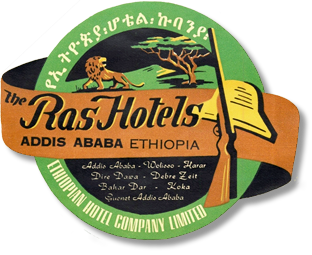
It was no trouble to go through the departure Customs again - I was literally whisked through (I suspect they wanted me out of there in a hurry!). I sheepishly got on the C130, where a very irate aircraft captain was waiting for me. I explained where the loot had been deposited and he hurried back to the flight deck. Minutes later the engines started and we taxied to the runway and took off. What a relief!
About an hour into the flight the captain came to the rear of the aircraft and said to Don, "Make sure this man gets punished when we get back to the UK!"
Since Don was an accomplice, I never heard about it again!


Subject: What happened then?
Hi Tony,
Our loading team was tasked with loading a Britannia with dangerous cargo. The aircraft to be loaded was parked on the compass swing pan at Brize which was out on the middle of the airfield; quite a remote spot. Dangerous cargo loads were always a pain as we had to separate stacks because of the UN codes and lashing down took ages. Our DAMO (who shall remain nameless), kept coming out to the aircraft to check our progress - he was concerned that the aircraft would miss chocks time.
In the meantime, because we had been out on the airfield for many hours, some of us were desperate for the loo and we were discouraged from using the aircraft toilets. We had no choice but to pee against the main undercarriage tyres to relieve ourselves. The DAMO came out again to check the aircraft load and just happened to notice the damp patch next to the tyres.
What happened then?
The DAMO bent down and with his fingers wiped them across the damp area, put it to his lips to taste it, then came charging up the stairs shouting that the aircraft had a hydraulic leak and the load would require a frame change. At this point our team leader stated that it wasn't hydraulic fluid but was in fact urine; the DAMO's face was an absolutely picture! Oh how we laughed later in the crew room!
Many regards,
Steve


Subject: What happened then?
Hi Tony
Khormaksar late 1961. In addition to our shift pattern, we were also required to do airfield guard duties at night time. This involved patrolling the airfield armed with a torch, whistle, canvas ammo belt with 50 rounds plus of course the trusty obsolete Lee Enfield .303 rifle. Myself and a colleague were wandering around amongst the rows of parked Hawker Hunters chatting away and putting the world to rights. It was 3am and everything was deathly quiet. Suddenly we heard a noise near the aircraft. We approached quietly, then we heard the noise again. What the hell was it ? No one should have been around at that hour. Following instructions, we called out the standard challenge in Arabic (we had had to practise it before going out). There was no reply. Hands shaking, we both “put one up the spout” and took off the safety catches. We were under strict orders to only open fire if our lives were being threatened or RAF property was being damaged. There I was, an 18 year old air movements clerk with less than 9 months service, not a fully combat trained infantryman.
Suddenly, from out of the darkness, a shadowy figure appeared…
We had made two unanswered challenges in Arabic. Supposing a hand grenade came flying in our direction? Or there was more than one of them and we were about to be fired at? We raised our rifles...
What happened then?
Then came our salvation, the shadowy figure shouted in broken English, “Don’t shoot, don’t shoot, Chowkidar, Chowkidar". Chowkidars were uniformed Arabic civilian security guards employed by the British to supplement security. Quite how, I never understood. This fellow had probably come onto the airfield for a skive and fallen asleep under the wing of a Hunter and awoken when he heard us approaching. Over 60 years later and I still get flashbacks to that incident!


It was about 2330 and unusually quiet with virtually no movements in or out. Sure enough, just after he left, the phone rang, a voice at the other end asked to speak to the duty ops officer. I asked who was calling and the voice replied with what I thought was SAC ? I didn’t catch the name.
I replied "Sorry mate, he’s just popped out to the mess for a quick pint."
The voice boomed out in reply "WELL BLOODY WELL GO AND FIND HIM THEN!"
Not particularly wishing to be spoken to like that by someone of similar rank, l retorted "Who do you think you are talking to pal?"
What happened then?
Then the wheels came off. The voice shouted "This is the SASO (Senior Air Staff Officer), Air Commodore Cribb!"
I had misheard SASO for SAC! I grovelled an apology, which was accepted.
Air Commodore Peter Cribb was one of the RAF’s greatest WW2 war heroes, he passed away in 2011. You can read his obituary in the Yorkshire Post. His war record as a bomber pilot is second to none. In later years I have considered it a great honour to have been bollocked by such a great man.
Best wishes, Fred

Subject: What happened then?
Hi Tony,
In 1996 I was the TSO (Training & Standards Officer) on UKMAMS. We were the 'Cinderella' flight between the two 'ugly sisters' namely Base and Mobile. As well as a training team, we had engineers, MT drivers, a supplier and clerks. To maintain our own standards we would accept a mobile task when not running a course.
One such occasion was in the October of 1996 when we took on a Hercules task heading for Nellis AFB near Las Vegas in Nevada. Before getting there we would night stop in Gander and then Wright Patterson AFB, Dayton, Ohio. The six man team did include one of our MTDs as a 'swansong' as he was shortly to be posted off of the squadron.
Al, the sergeant, had just received a new hand-held cine camera (purely for use as a training aid) and decided he would take it on the task to practice with. The task went well out of Lyneham and after our first night stop we gelled well with the Herc crew.
When we arrived at Wright Patterson we were accommodated quite some distance from downtown Dayton. The operating crew decided to make the effort and get into town. We were happy making our own entertainment in a local bar.
The next morning everyone was up on time and we travelled back to the airfield. Overnight it seemed the base had received some visitors as on the next pans to us were two USAF B747s including Air Force One. Al couldn't resist it, out came the camera and he started filming.
Once our Pilots and Nav had returned from Flight Planning the aircraft was fired up. All engines running and the Air Loadmaster climbed on board and closed the crew door. We sat there waiting to taxi but that did not happen. The ALM then reopened the crew door and disappeared outside. After some 10 minutes the engines were shut down and we assumed it was a tech snag.
A short while later, two USAF Air Police entered the aircraft and climbed onto the flight deck. A few minutes passed and then the aircraft captain, looking quite annoyed, entered the cargo bay and said, "Okay, who was filming the 747?"
Al sheepishly put his hand up and was promptly escorted off of the aircraft by the two military policemen.
What happened then?
Why did the USAF get so excited? It transpires that there are two types of B747 which look like Air Force One. The aircraft Al filmed was known as a B747 E-4A Advanced Airborne Command Post (AACP) also known as 'The Nightwatch'.

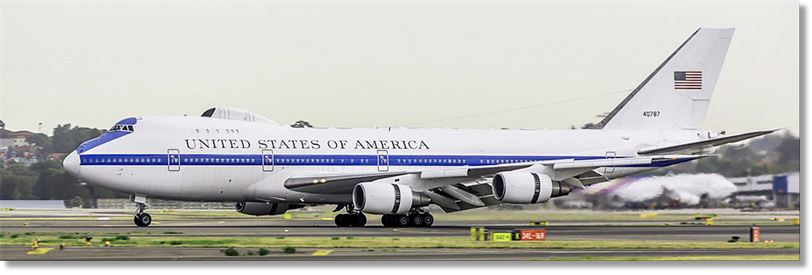
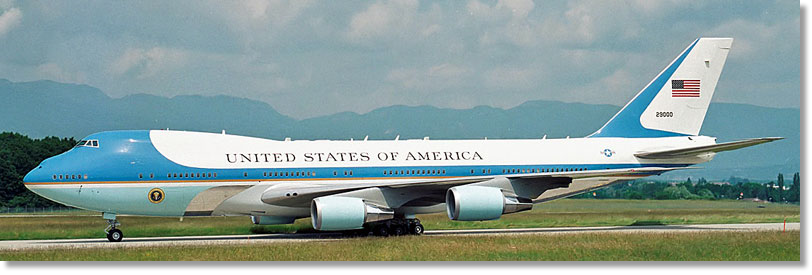
I now started to have kittens! Although I had not taken any pics at Wright Patterson, I did have on my camera memory card some pictures I took at Whiteman AFB on a previous task. Whiteman was the home of the B2 Stealth Bombers and we had been parked amongst them. I thought that if these were seen I would be in serious trouble!
Running through my mind was the option of stamping on my camera or trying to remove the memory card without drawing attention to myself. The crisis passed and we were at last allowed to leave. I was never so grateful as to get airborne.
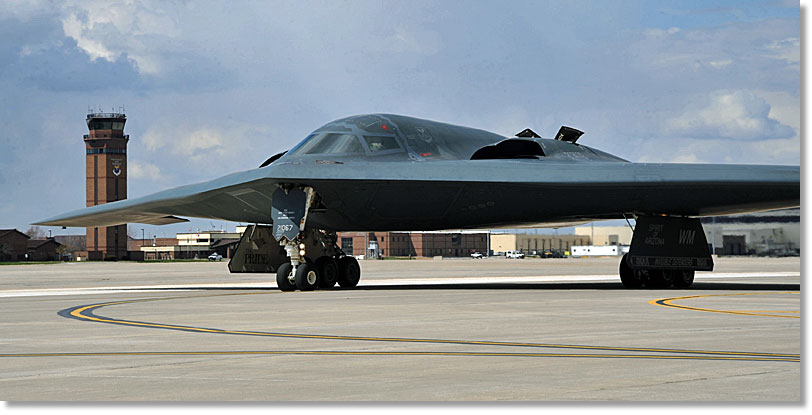
As was the usual tradition, we had a beer in the hotel and then headed for 'The Strip' starting at Circus Circus. Al, not learning his lesson had once again brought along the cine camera.
For those not aware, the taking of any pictures inside a Casino is strictly forbidden. Al started filming.
In the centre of the Casino there are constant circus acts and at that time a juggler was performing a board balancing act. He was stood on top of a six foot high oversized bar stool and then on a plank of wood on top of a roller.
As his performance progressed he was jumping up in the air and at the same time adding another layer of planking. It was obvious he was getting 'too cocky' and eventually he overbalanced, fell onto to the top of the stool and then carried on a further six feet to the stage below.
He immediately leapt to his feet pretending he wasn't hurt! I asked Al if he got it all on camera to which he affirmed.
When we got back to Lyneham, we decided to submit the 'Juggling Incident' to ITV's "You've Been Framed". I've seen the clip a few times over the years. We were paid £250 for the entry which we shared amongst us.
Best regards,
Ian
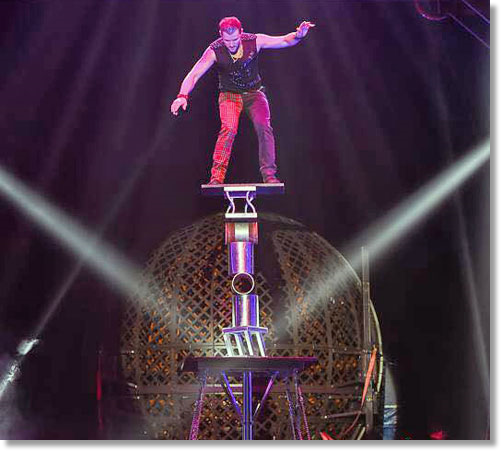

Subject: What happened then?
Tuning Forks
Early in my career, in the late ‘50s, I was a "Bin-Rat," (Supply Tech) at RCAF Station, Claresholm, Alberta. A loathsome job.
I was working in Tech Stores and one of my duties was issuing and returning tool kits. I remember one crusty old Flight Sergeant, an aircraft rigger by trade. (Sgt Shatterproof comes to mind), who was retiring after 35 years service and was turning in his tool kit. He had all of it, in good condition and had no trouble parting with any of it, 'til we got to, as I checked it off his inventory, "Forks, Tuning, Set of 8, c/w Mallet.
He handed me a small leather box that had a deep patina gained from years of use. I opened it to see, set in velvet, a set of tuning forks and a small hammer. He looked at me, a pimply faced Aircraftsman 1st Class, and asked, "Son, is there any way you could see it clear to let me keep these? I was issued them on day one and have tuned the rigging on many types of aircraft all over the world and over many years."
It didn’t take much thought to tell him he could keep them as I didn’t see a need for any tuning forks in the future of the RCAF. After all this was the ‘50s.
What happened then?
That Friday at Beer Call in the Wets, I went to the bar and ordered a 50¢ beer. On putting my money down, I was told that I had $5.00 worth of credit, compliments of the old Flight Sergeant!
A welcome surprise, and a supplement to my $75.00 (and all I could eat), monthly pay package!


and welcome our new Station Commander, Group Captain Claire O’Grady.
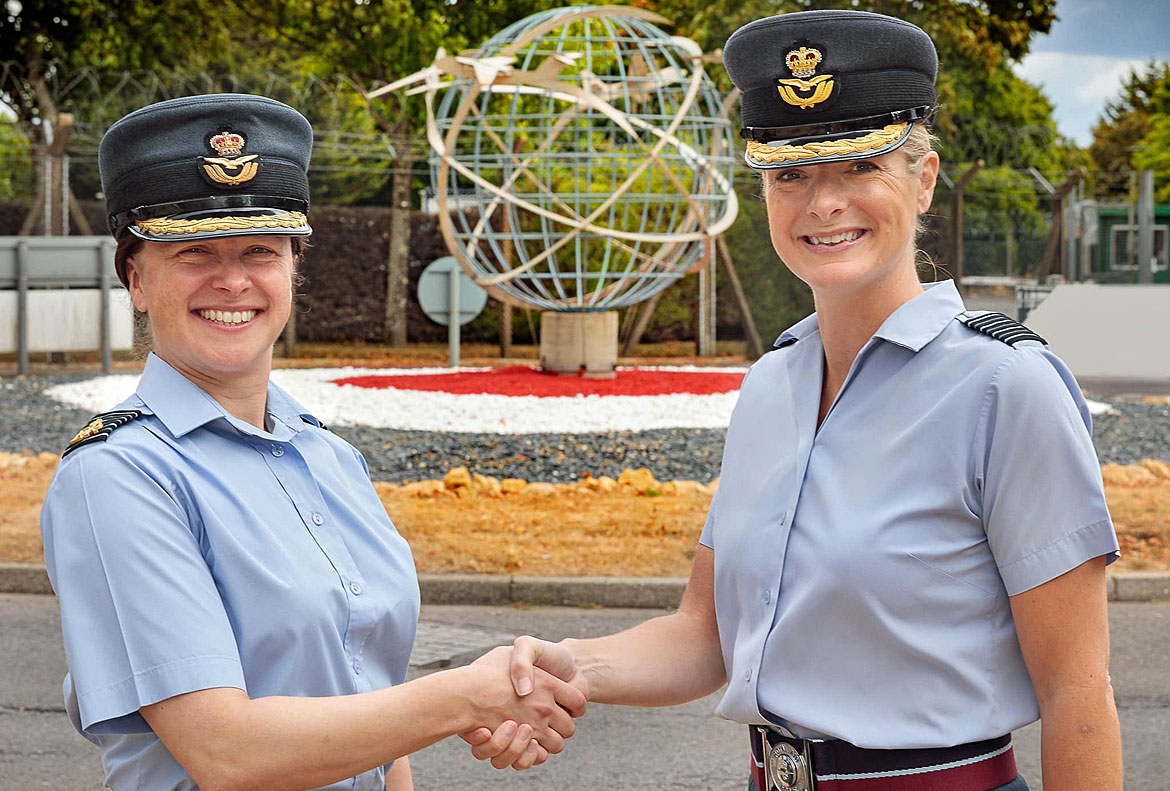

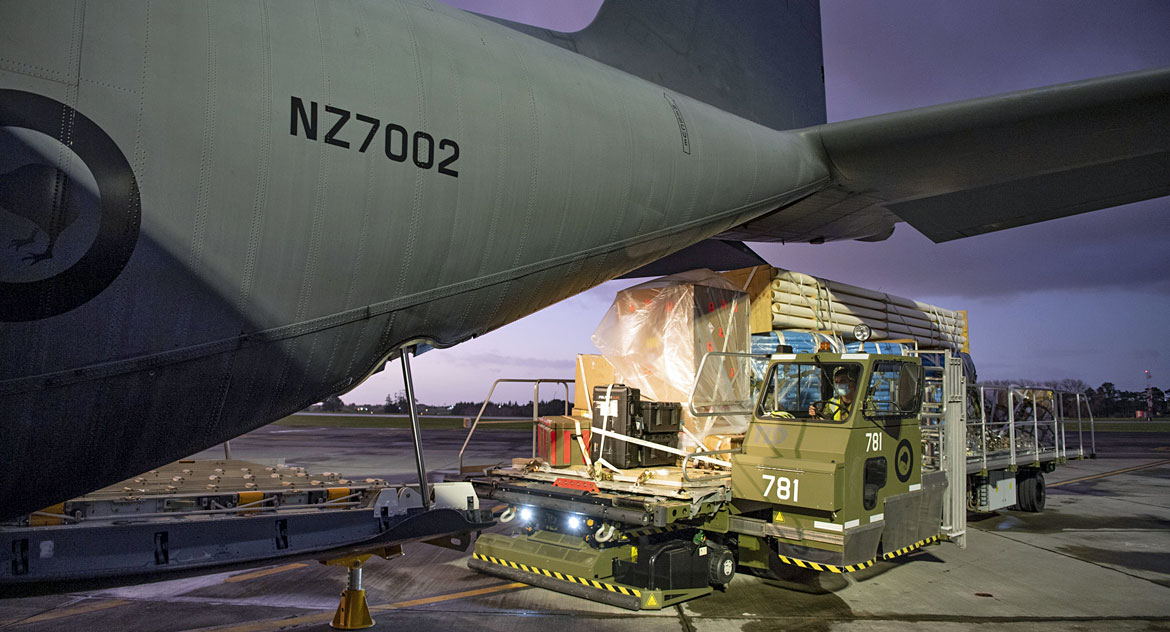
The aircraft will then fly to Nadi Airport, Fiji, to deliver a sterilizer destined for the new Ba Hospital. Logan Currie, chief executive of medical solutions provider Cubro, said life-saving operations at Ba Hospital cannot commence until the steriliser is in place. “With ongoing freight challenges, there was simply no other way to get essential health care equipment like this steriliser to our Pacific neighbours. We had exhausted all shipping options, and were concerned that life-saving surgeries would be delayed if we couldn’t find a way of getting the steriliser to Fiji.”
Air Component Commander, Air Commodore Shaun Sexton, said the flight to Fiji had been planned for some weeks. “When the call came in to assist Kiribati, we organised the diversion to ensure they were able to receive what they needed. We’re happy to have helped these consignments make it to Kiribati and Fiji where they will quite literally be life-saving.”
Also on board the aircraft are 9000 resource books for senior secondary school children, which have been gifted by the Fiji Association in Auckland and ESA Publications, and cover a range of subjects including English, Maths, Economics, Chemistry, Science, Physics and Accounting. President of the Fiji Association in Auckland, Dr Satendra Singh said the books would assist in much needed revision work after Covid-related problems faced by many schools across the country. The textbooks will be distributed by the Fijian Education Ministry to needy schools, especially in remote areas, in time for many senior students to prepare for exams.”
On the return leg from Fiji, the Hercules will return equipment and stores back to New Zealand on completion of a bilateral military exercise involving 90 New Zealand Army Officer Cadets who have been undertaking their field training in Fiji with the Republic of Fiji Military Forces.
nzdf.mil.nz

Subject: What happened then?
Hi Tony,
Cannot remember the exact dates, but my team and I were tasked with a two-week stint in Nassau. Our task each morning was to load 2 landrovers and trailers and a few pax into a Herc at 0800 and to fly to Andros Island some 75km away, which was less than a 10 minute flight (the Royal Marines were on Pirate Patrol at the time). At 1700 we did the reverse journey leaving us with a lot of free time.
Our aim was to obtain a Nassau policeman’s helmet for our crew room. Not wishing to create an international incident, I went to Police HQ and met with a very interesting Major. I explained how we collected hats from wherever we could to showcase in our crew room. He seemed interested but non-committal at the time.
Two days before departure, I had a call to visit the Major and on arrival he presented me with a brand new helmet, complete with the flat dome and ceremonial spike. He asked me what we would have done if he had not gifted the hat to me. When I explained that we would have probaby tried to purloin one from the police guard as the Herc's engines were turning and burning prior to our imminent departure!
What happened then?
I was politely asked to leave before he changed his mind! However, we did part company the best of friends and the splendid Nassau police helmet adorned the crew room wall for many years.
Where is it now, I wonder?
Yours aye,
Allan

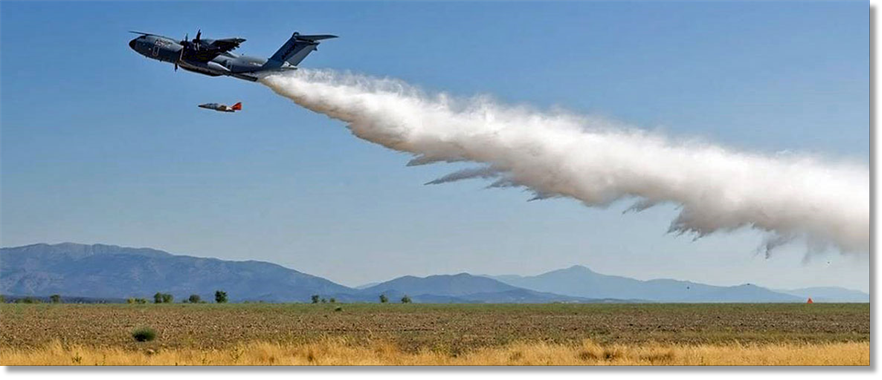
The main objective of the campaign is to validate the drop water quantity and time as well as the ability of the A400M to carry out this new role with the kit. The development of this prototype and the tests have been carried out in close collaboration with the 43rd Group of the Spanish Air Force, as well as European authorities in Firefighting operations and the Ministry for Ecological Transition and Demographic Challenge (MITECO).
Mike Schellhorn, CEO of Airbus Defence and Space said, “The development of this firefighting kit is an intrinsic part of our journey towards helping to create a more sustainable and safer world, not only by our actions but also through our products. We strongly believe the A400M can play a vital role in the fight against the ever-increasing threat posed by wildfires and support the restoration of social and environmental systems,”
RORO kit for A400M
The Airbus firefighting solution created for the A400M is a roll-on/roll-off (RORO) kit that requires no modification to the aircraft and therefore is interchangeable with any aircraft in the A400M fleet. The water is stored in a fixed tank in the cargo hold, and retained by two independent doors. These doors are connected to two flood pipes, so when the discharge is triggered, the water is expelled through two sections at the end of the ramp. The introduction of this RORO solution allows a rapid reaction to unforeseen fires and reconfiguration of the aircraft to any of its other roles.
Due to its low-level flight capability and maneuverability at low speeds, the A400M can accurately drop payloads of water at very low heights, down to 150ft. In the future, in addition to the development of the production version of this kit, Airbus will analyze this operation also in nighttime conditions, reinforcing the efficiency and effectiveness of the mission.
AviationSource

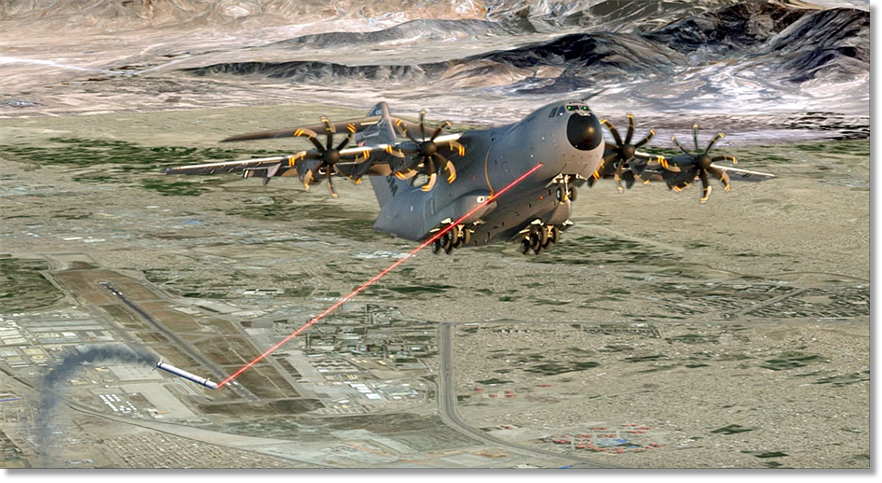
By 2023, 24 Bundeswehr A400M transport aircraft (tactical version) are to be equipped with this automatic protection system against interference-resistant missiles.
Airbus Defense and Space was commissioned in 2019 by the Federal Office of Bundeswehr Equipment, Information Technology and In-Service Support (BAAINBw) to integrate and certify the DIRCM (Directed Infrared Counter Measure) system into the Defence Aids Sub-Systems (DASS) of the transport aircraft. The contract is worth 270 million euros.
The J-MUSIC was selected for DIRCM. In 2019, it was reported that Diehl Defense takes care of the configuration of the four devices per aircraft, which cover the entire space under the aircraft. As mentioned above, the latest release states that three SJ-MUSIC systems are installed.
J-MUSIC is a distributed system for military transport aircraft, tanker aircraft, administrative aircraft, etc. The MUSIC multispectral infrared anti-missile system uses fibre laser technology, IR directional countermeasures, and a rotary turret.
A missile attack warning system provides the detection of an approaching missile. After detection, a command is issued to the DIRCM system, which sends a thermal tracking device to the target to capture and track the missile. Then a powerful onboard laser is turned on, blinding the missile seeker and putting it out of action.
The DIRCM system defends big military and commercial aircraft against infrared-guided missile threats. The protective system is equipped with interfaces that connect it to the guided missile warning system and the Defensive Aid System. It can fly in all phases of flight without damaging urban or wooded areas. Diehl Defence also offers Integrated Logistic Support (ILS) for the DIRCM system, as well as repair, service, and maintenance.
The Airbus A400M strategic transport aircraft is currently equipped with a basic protection kit, including the Indra ALR400M RWR/ESM radar warning receiver, Thales and Cassidian’s Miras IR missile attack warning systems, and MBDA’s Saphir 400 chaff and IR trap dropper.
Aside from that, both firms want to collaborate on the MDS, a smaller version of DIRCM (mini DIRCM system). The MDS is ideal for helicopters but also suited for smaller aircraft. Elbit has already developed a mini-MUSIC system to protect small and medium-sized aircraft.
The DIRCM system adds to Diehl Defence’s protection system product line, which includes the segments aeroplane protection, vehicle protection, and HPEM effector systems.
frontierindia.com


But wait - it doesn't end there - starting in the next edition, Rompers Green will repeat the cycle all over again. I'm sure most of us will have forgotten the story line anyway, so this will be a refresher!
TG
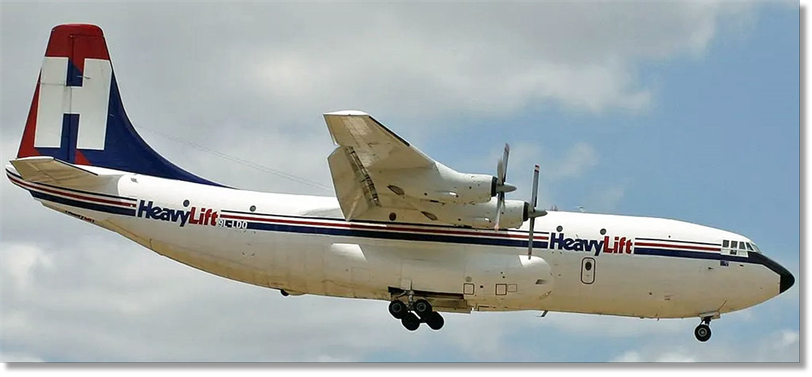

Design-led by RAF requirements
The Belfast has its origins in studies conducted by the Belfast-based aircraft manufacturer Short Brothers on behalf of a request from the Royal Air Force (RAF). The RAF had enquired into the possibility of pairing four Bristol Orion turboprop engines with a specially designed airframe to transport military vehicles and equipment during the mid-1950s.
Despite the chairman of the company at that time, Sir Matthew Slattery, doubting the practicality or saleability of such aircraft, it was decided to continue these studies as part of the company's management believing that there would likely be an Operational Requirement issued for the Royal Air Force (RAF) seeking such an aircraft in the near future.
In March 1957, Short Brothers submitted the first design of its proposed large transport aircraft, designated as the Britannic. Despite the pursuit of commonality, the Britannic differed significantly from the Britannia in terms of the high-mounting of its wings; the wing design themselves, the tail unit, engines, and significant portions of the landing gear. Various other systems, however, were common to both types.
The new circular cross-section fuselage design was particularly large for the era. The design could accommodate bulky loads up to 12 feet wide and allow troops to be carried across two separate decks.
In 1957, it became clear that there was a definite need within the RAF for a heavy freighter, and the issuing of an Operational Requirement followed, seeking the availability of a freighter capable of carrying a wide range of military payloads over long ranges. The commissioned aircraft would be operated by RAF Transport Command, capable of carrying artillery, more than 200 troops, helicopters, and guided missiles. In particular, the RAF required an increased payload/range demand of 30,000 lbs being carried over a distance of 3,600 nautical miles, significantly higher than the RAF's existing transport fleet. Short proceeded to develop their original proposal for the Britannic to meet the RAF's revised requirements. As the design of the proposed aircraft was repeatedly revised, it was progressively becoming less common to the earlier Britannia, incorporating a more significant proportion of all-new components, sections, and systems instead. Amongst the changes made was a new center section to the wing, along with the adoption of the Rolls-Royce Tyne engine. In January 1959, the RAF announced its selection of the Short design to meet the requirement. Accordingly, in February 1959, work on the Short's project formally commenced and on December 21st, 1960, a contract for a total of 10 freighters, now designated as the Belfast C.1, was signed.
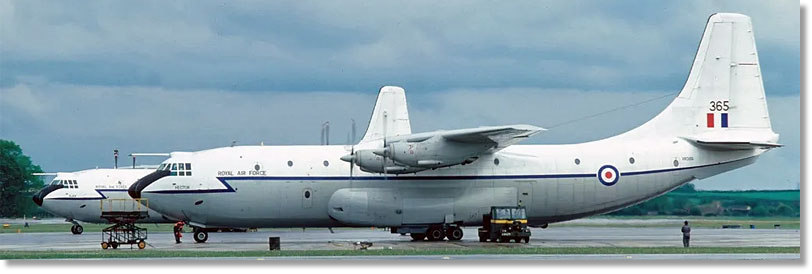
The cargo deck of the Belfast was 84ft (26m) in length in a circular-section pressurized fuselage over 16 feet (4.9m) in diameter and was reached through a 'beaver tail' with rear loading doors and an integral ramp. It was large enough that forklift trucks could work within the cargo hold.
The main undercarriage was two 8-wheel bogies and a 2-wheel nose pairing. The Belfast was capable of a maximum takeoff weight (MTOW) of over 220,500 lb (100 tonnes). This was less than the contemporaneous 250-tonne Antonov An-22 and the 128-tonne Douglas C-133 Cargomaster, although was greater than the RAFs existing Lockheed C-130 Hercules. The Belfast could carry 150 troops with full equipment or various vehicles, such as:
A single Chieftain tank;
Up to three armored cars;
A pair of Westland Wessex helicopters;
Four Westland Whirlwind helicopters; or
Up to six Westland Wasp or Westland Scout helicopters.
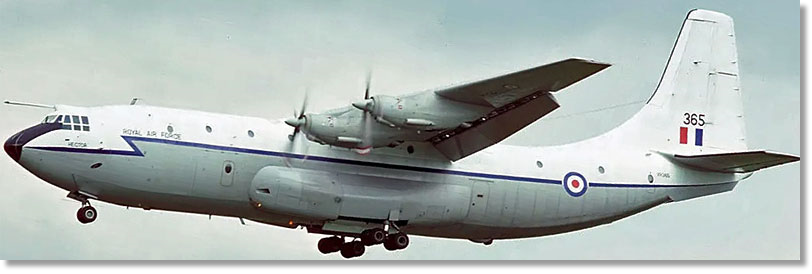
The autopilot and flight control system was triplex in the roll and pitch channels. The instrument landing system comprised many functions, such as an autothrottle, a head-up display, and a radio altimeter - all representing cutting-edge technology back in the 1950s and 1960s.
Short Belfast - Specifications
Wingspan - 48.40m / 158 ft 9 in
Length - 41.58 m / 136 ft 5 in
Height - 14.33 m / 47 ft
Wing area - 229 sq m / 2,466 sq ft
Empty operating weight - 57, 606kg / 127,000lb
Maximum take-off weight - 104,326 kg / 230,000lb
Maximum cruising speed - 566kph / 352mph
Service ceiling - 9,145m / 30,000ft
Range with maximum payload - 1,609 km / 1,000 miles
Multiple military derivatives of the Belfast were proposed by Short. Two principal civil versions of the aircraft retained much of the original design, such as its large rear-loading doors for access to the main freight hold. The payload was to be increased to 85,000 lb, and reportedly, up to 150 passengers could be seated on a single deck. In contrast, up to 288 people could be seated across a double-deck configuration in an airline configuration.
During 1964, Short revealed that it had approached British European Airways (BEA) and BOAC with its proposals for a large double-deck short-haul passenger version of the Belfast. However, with the jet age in its infancy and other more practical civil aircraft already being developed or introduced, no orders from either airline (which merged to form British Airways in 1974) were forthcoming.
On January 5th, 1964, the prototype Belfast conducted its maiden flight from Sydenham Airport, Belfast. The prototype flew for 55 minutes by chief test pilot Denis Taylor alongside a crew of six. Following the first flight, Taylor stated that, "It was the easiest ride I have had for a very long time. The aircraft was an absolute joy to fly. She's a beauty."
The first two aircraft produced were equipped with dedicated flight-test instrumentation and were used to complete 850 hours of flight trials. Certification was conducted to both RAF and Air Registration Board (ARB) requirements, and the first autoland was performed after only 120 hours of test flying, significantly less than originally estimated.
Entry into service
On January 20th, 1966, the Belfast entered service with No. 53 Squadron when XR367 (the sixth production aircraft) was delivered to RAF Brize Norton, Carterton, Oxfordshire. Following the type's entry into RAF service, it became apparent that a major drag problem prevented the initial five aircraft from attaining Short's desired performance. Consequently, modifications and testing were carried out, and a new rear fairing was developed, which resulted in raising the fleet's cruising speed by 40 mph.
Upon its entry into service, the Belfast boasted the distinction of becoming the largest aircraft that the British military had ever operated up to that time. It was also notable for being the first aircraft to be designed from the onset to be equipped with full 'blind landing' automatic landing system equipment. However, the accolades enjoyed by the Belfast were to be short-lived.
The reorganization of the new RAF Strike Command was to have repercussions on the RAF's relatively small fleet of Belfasts. The process ushered in the retirement of a number of aircraft types, including the Bristol Britannia and De Havilland Comet in 1975. By the end of 1976, the Belfast fleet had been retired entirely and was subsequently flown to RAF Kemble, Gloucestershire, for long-term storage.
Shortly after the type had been retired by the RAF, four of the ten Belfasts were broken up and scrapped by the RAF, while one was preserved. However, five Belfasts were sold and placed into civilian service with the commercial cargo airline HeavyLift Cargo Airlines based at London Stansted Airport.
These aircraft, having since been allocated civilian registrations, were used by the company for the charter transport of various items of outsized cargo goods that could not be flown in other aircraft types available at the time. They were offered on the general cargo charter market and found themselves performing outsize cargo operations worldwide for several years.
Ironically, one of the early commercial customers for HeavyLift Cargo Airlines was the RAF itself, now short of a large freighter capable of long-range flights. Some of the Belfasts were chartered during the Falklands war in 1982, with some sources suggesting that this operation cost the RAF more than keeping all the aircraft in active service until the 1990s. HeavyLift's Belfasts were again contracted to support the RAF during the first Gulf War, transporting vehicles and helicopters too large to be carried by the existing RAF Hercules fleet.

G-BEPE (formerly XR362, commenced service with Heavylift Cargo Airlines in March 1980 and retired in 1984)
G-BEPS (formerly XR368, commenced service with Heavylift Cargo Airlines in October 1980 and retired in March 2001)
G-BFYU (formerly XR367, commenced service with Heavylift Cargo Airlines in October 1980 and retired in 1992)
G-HLFT (formerly XR365, commenced service with Heavylift Cargo Airlines in September 1981 and retired in September 2003 - although see below)
G-OHCA (formerly XR363, purchased for spare parts, civil registration never worn and scrapped at Southend)
Retirement
This one aircraft, G-HLFT, was refurbished at London Southend Airport and was subsequently flown to Australia in 2003, operated by a new company, coincidentally also named HeavyLift Cargo Airlines. Initially re-registered 9L-LDQ and later registered RP-C8020, the aircraft flew missions relating to the mining industry throughout Australia and further afield.
However, in September 2010, the plane was removed from service. On August 19th, 2011, after spending the best part of a year sitting on the Cairns International Airport apron where it had been moved before the scrapping of the remaining company Boeing 727 (RP-C8016), it was moved to the general aviation apron at Cairns International Airport, where it believed to still reside to this day.
The HeavyLift titles were painted over on August 28th, 2011, but the registration RP-C8020 was still visible. The latest on the aircraft is that it remains at the airport, reportedly intact at the time of writing, painted all-white, but with no registration visible.
According to sources at the airport, the aircraft is the subject of a legal dispute between its owner and the Cairns airport authority over unpaid landing and parking fees - a disagreement that seemingly has dragged out for over ten years.
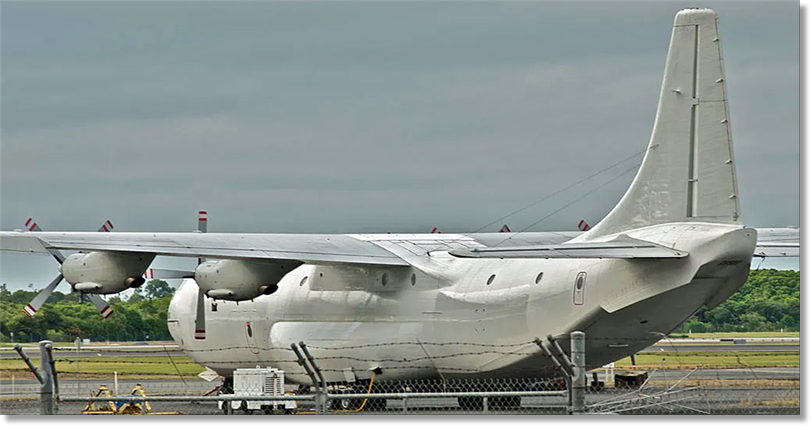
The last production Belfast (XR371 'Enceladus'), is preserved at the RAF Museum Cosford near Wolverhampton, UK. This aircraft was repainted before being displayed under cover at the National Cold War Exhibition.
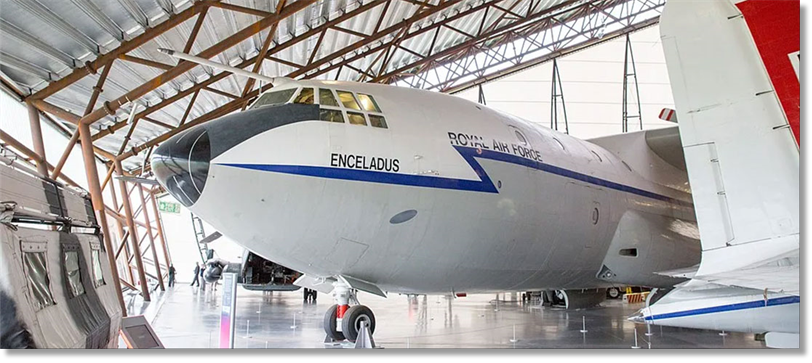
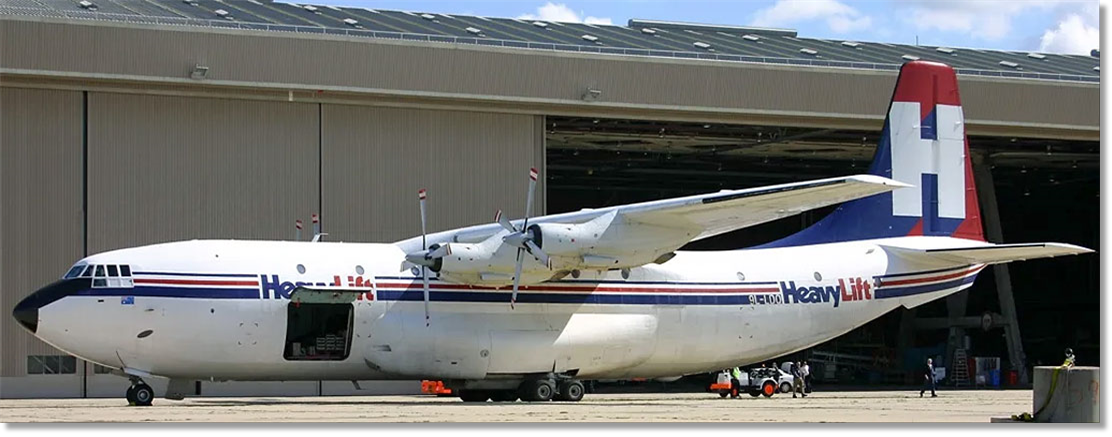
After promising so much when first designed and introduced, the Belfast never really fulfilled its true potential. As a specialist in the carriage of outsize freight, one might argue that there remains a niche market for such an aircraft to this day.
Will we ever see a Belfast fly again in the future? With just a single example safely tucked inside a museum and another remaining stuck in legal limbo in Australia, the chances of a Belfast ever taking to the air again seem sadly remote, if not impossible.
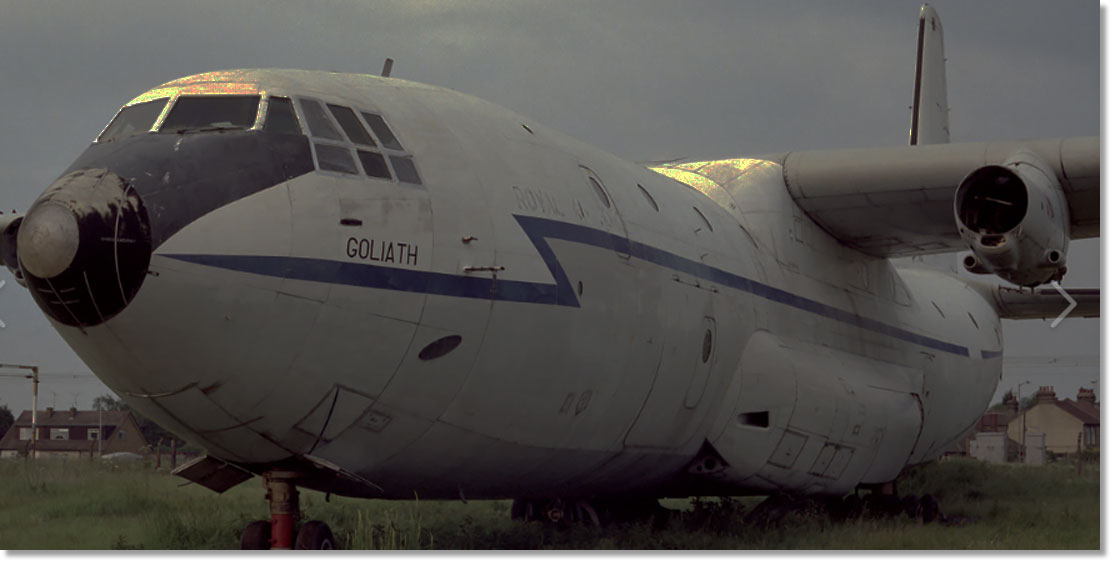
Samson - RAF Serial XR362 (used registration G-ASKE for overseas test flight), sold as G-BEPE then scrapped.
Goliath - RAF Serial XR363, sold as G-OHCA then scrapped.
Pallas - RAF Serial XR364, sold as scrap to Rolls-Royce who recovered the Tyne engines.
Hector - RAF Serial XR365, sold as G-HLFT then as 9L-LDQ operating with HeavyLift Cargo Airlines, now RP-C8020 (in Cairns).
Atlas - RAF Serial XR366, sold to Rolls-Royce for engines.
Heracles - RAF Serial XR367 - sold as G-BFYU then scrapped.
Theseus - RAF Serial XR368, sold as G-BEPS then in storage at Southend Airport - broken up 22/Oct/2008.
Spartacus - RAF Serial XR369, sold as G-BEPL then scrapped.
Ajax - RAF Serial XR370, sold to Rolls-Royce for engines.
Enceladus - RAF Serial XR371, preserved as an exhibit at RAF Museum Cosford.

Subject: Re: The last flying Belfast
Tony,
The Belfast is still parked down the road at Cairns Airport accumulating airport fees to a broke/liquidated company. The airframe is completely u/s and nobody is sure what is happening into the future.
Best regards
Howie

to the Memory of:
Group Captain Jock Drysdale (RAF)
ukmamsoba@gmail.com
If you wish to make a donation,
you may use the above e-mail
through PayPal or e-mail transfer through your bank
.










